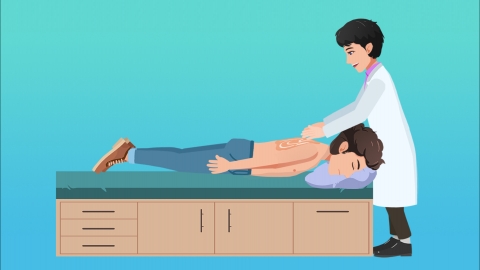Differences Between Adult Massage and Pediatric Massage
Generally, the differences between adult massage and pediatric massage can be analyzed in terms of massage techniques, duration and frequency, operational requirements and training, acupoint selection and treatment of diseases, applicable age groups, and precautions. A detailed analysis is as follows:

1. Massage Techniques
Adult massage techniques are typically stronger and require force from the hands and wrists to produce noticeable stimulation and pressure on the muscles and joints, effectively relieving body pain and muscle tension. In contrast, pediatric massage techniques are relatively gentle, mainly performed using fingertips and palms, applying appropriate pressure according to the child's physical condition to promote blood circulation and relax the body.
2. Duration and Frequency
Adult massage sessions are usually longer, often requiring more than 40 minutes to achieve effective results. The frequency of adult massage can be adjusted according to individual needs and health conditions. Pediatric massage sessions are relatively shorter, generally lasting about 20 minutes, and should not be performed too frequently. As children's skin and bodies are more delicate, excessive massage may cause discomfort.
3. Operational Requirements and Training
Adult massage practitioners require significant skill and experience, typically needing professional training and certification before practice. Pediatric massage not only requires professional massage techniques but also demands higher levels of empathy, patience, and attention to detail from practitioners. They must undergo specialized pediatric massage training to understand children's physiological characteristics and appropriate massage techniques.
4. Acupoint Selection and Treatment of Diseases
Adult massage primarily focuses on the body's 12 main meridians and is commonly used to assist in treating orthopedic conditions, musculoskeletal disorders, neck, shoulder, waist, and leg pain, as well as internal medicine and gynecological diseases. Pediatric massage mainly targets areas below the elbow and knee joints, most commonly the wrists, forearms, and hands. It is used to treat diseases of the digestive and respiratory systems, such as diarrhea, constipation, anorexia, and hiccups. Additionally, pediatric massage can help enhance children's resistance and immunity, promoting growth and development.
5. Applicable Age Groups and Precautions
Adult massage is suitable for individuals over 18 years old. During massage, adults should pay attention to their own physical condition and health status, avoiding massage during disease flare-ups. Pediatric massage is suitable for children of all age groups. However, when children are over five years old, the sensitivity of certain acupoints may decrease, potentially leading to reduced effectiveness of massage.
When undergoing massage therapy, it is important to choose appropriate massage methods and qualified practitioners according to individual age, health status, and specific needs.









